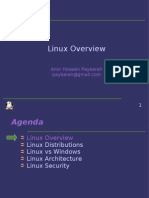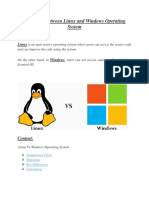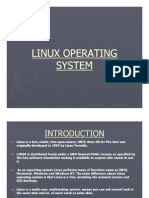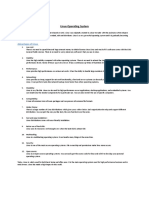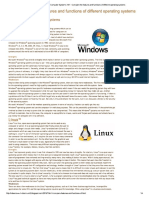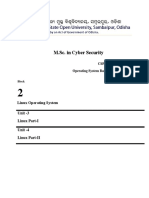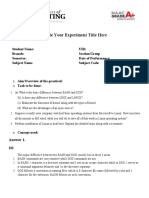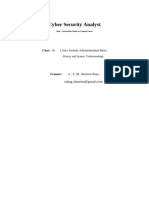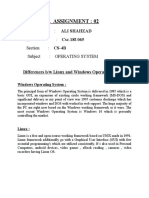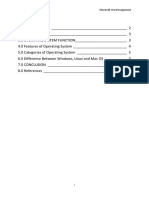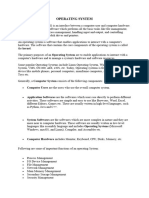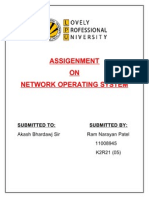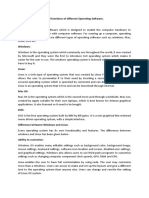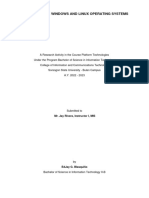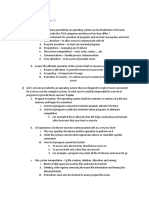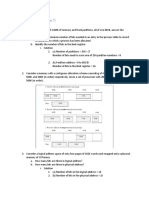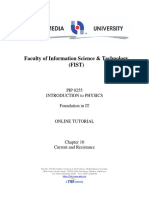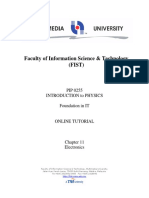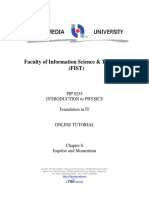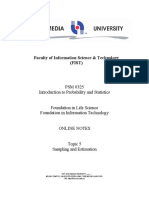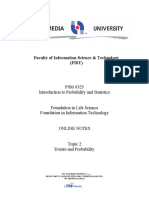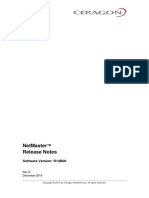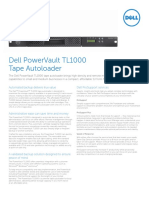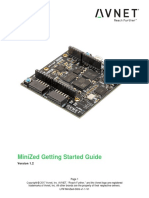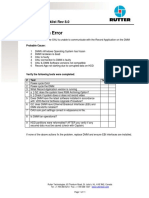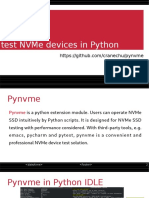0% found this document useful (0 votes)
157 views7 pagesOperating System Kernels
The document compares the kernels and architecture of Windows, Mac OS, and Linux operating systems. It discusses:
- Windows uses a hybrid kernel combining monolithic and microkernel approaches. Mac OS also uses a hybrid XNU kernel combining a Mach microkernel and BSD kernel. Linux uses a monolithic kernel architecture.
- File permission models differ between operating systems, with Windows using more granular control and Mac/Linux using owner, group, other models.
- Process management varies - Windows relies more on threads while Linux uses commands and daemons, and Mac monitors processes.
- Memory allocation algorithms differ between operating systems in how memory is managed for processes.
The document concludes Linux has stronger
Uploaded by
MATHAVAN A L KRISHNANCopyright
© © All Rights Reserved
We take content rights seriously. If you suspect this is your content, claim it here.
Available Formats
Download as DOCX, PDF, TXT or read online on Scribd
0% found this document useful (0 votes)
157 views7 pagesOperating System Kernels
The document compares the kernels and architecture of Windows, Mac OS, and Linux operating systems. It discusses:
- Windows uses a hybrid kernel combining monolithic and microkernel approaches. Mac OS also uses a hybrid XNU kernel combining a Mach microkernel and BSD kernel. Linux uses a monolithic kernel architecture.
- File permission models differ between operating systems, with Windows using more granular control and Mac/Linux using owner, group, other models.
- Process management varies - Windows relies more on threads while Linux uses commands and daemons, and Mac monitors processes.
- Memory allocation algorithms differ between operating systems in how memory is managed for processes.
The document concludes Linux has stronger
Uploaded by
MATHAVAN A L KRISHNANCopyright
© © All Rights Reserved
We take content rights seriously. If you suspect this is your content, claim it here.
Available Formats
Download as DOCX, PDF, TXT or read online on Scribd
/ 7



